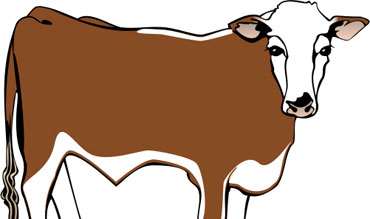Steering clear of bad fertilizer
November 16, 2011
 Ah, November. The days are shorter, the light is sharper, and if you breathe deeply, you can almost smell the—whew! Maybe let’s not smell the air today.
Ah, November. The days are shorter, the light is sharper, and if you breathe deeply, you can almost smell the—whew! Maybe let’s not smell the air today.
Yes, fall is fertilizer season in Southern California. And as the autumn air grows pungent over the lawns of Los Angeles County, homeowners are being reminded to spread the wealth responsibly.
“The same nutrients that make your grass grow also will make algal blooms grow if they wash down the storm drains and into the waterways,” notes Susie Santilena, an environmental engineer in water quality at Heal the Bay.
The nitrogen and phosphorus that are so good for plants may contribute to toxic red tides in the ocean and can make algae run wild in freshwater areas like Malibu Creek, creating dead zones as the green scum blocks sunlight and inhibits the growth of other plants and animals, Santilena says.
The algae even wreaks havoc when it dies, because it sucks oxygen out of the water as it decomposes, a process known as eutrophication.
“When you don’t have oxygen in your waterway, your marine life suffocates and you get fish die-offs because there’s no dissolved oxygen in your water,” she says. “And there are aesthetic issues—algae growth can create pond scum, which is just kind of gross to look at in waterways.”
So what to do? It’s tricky, environmental advocates say, because while organic fertilizers such as steer manure and worm castings have advantages that chemical fertilizers don’t share, both can create destructive runoff if they aren’t applied carefully.
Manure tends to adhere to the soil better, so its runoff is less concentrated, but it also can introduce harmful bacteria into the water.
“I have a personal preference for worm castings for multiple other benefits, including environmental impact of production, but they can be overused like the other fertilizers,” says Santilena, noting that worm castings also can be hard to obtain in sufficient quantities for large-scale application.
“It’s how and when the fertilizer is applied that matters most.”
Environmental consultant and master gardener Curtis Thomsen, who conducts the Countywide Smart Gardening program, recommends a half-and-half mix of compost and fertilizer, sprinkled lightly over a lawn that has been aerated.
If you don’t have compost, he adds, there are sites in Los Angeles that offer free mulch that you can shred to make some and low-cost bins can be purchased at Smart Gardening workshops countywide. “The worms smell the organics in it and pull them down, which allows water to penetrate deeper,” he says, adding that compost is especially good for getting nutrients to the roots of thick grasses that tend to thatch. Also, he says, if you add that mixture to your garden plot this fall, it will improve yields, reduce disease in the soil and produce healthier, stronger plants next year.
Meanwhile, Rudy Valenzuela, regional grounds maintenance supervisor for the county Department of Parks and Recreation, notes that the county aerates and fertilizes its park lawns with a commercial chemical blend of nitrogen, potassium and iron that is geared to its sturdy mixture of grasses. He notes, however, that the crews wait until after dark to water and then do it judiciously, turning off the sprinklers after about 15 minutes per station to avoid runoff.
Both approaches keep in mind the need to keep your fertilizer on your own grass. Here are some dos and don’ts from Heal the Bay:
– Do use fertilizer as sparingly as possible, no matter what type you use. Less is more.
– Don’t ever apply fertilizer right before a rainstorm, and never overwater after applying. Too much water will just lift your fertilizer and wash it off.
–Don’t apply to highly compacted or steeply sloped grasses, which also prevent fertilizers from fully soaking into the soil.
–Do consider creating a rain garden, using rain barrels and other containers that will keep rain in your hard and out of the street.
Posted 11/16/11












 405 bridge work causes a stink
405 bridge work causes a stink
